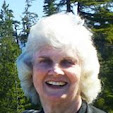Banff
watercolour and crayon
©2023 Charlene Brown
I was born in Banff, lived there until I
finished high school, and returned to work there each summer until I finished
university.
This is the only one of my Alberta
paintings in which the place looks almost exactly the same as when I lived
there.
watercolour and crayon
©2016 Charlene Brown
Calgary
watercolour, crayon and marker
©2012 Charlene Brown
My final year at
University of Alberta was completed at the Calgary campus, UAC, which became
the University of Calgary a few years later.
This painting of Calgary was based on photos I took from a 2012 WestJet flight to Calgary and most of the buildings in it– bank towers, Calgary Tower, Suncor (the fact the building is red is only part of the reason it was initially referred to as Red Square), the Bow Building, Olympic Park ski jump, and the Alberta Children’s Hospital ̶ were not there when I was at university.

















